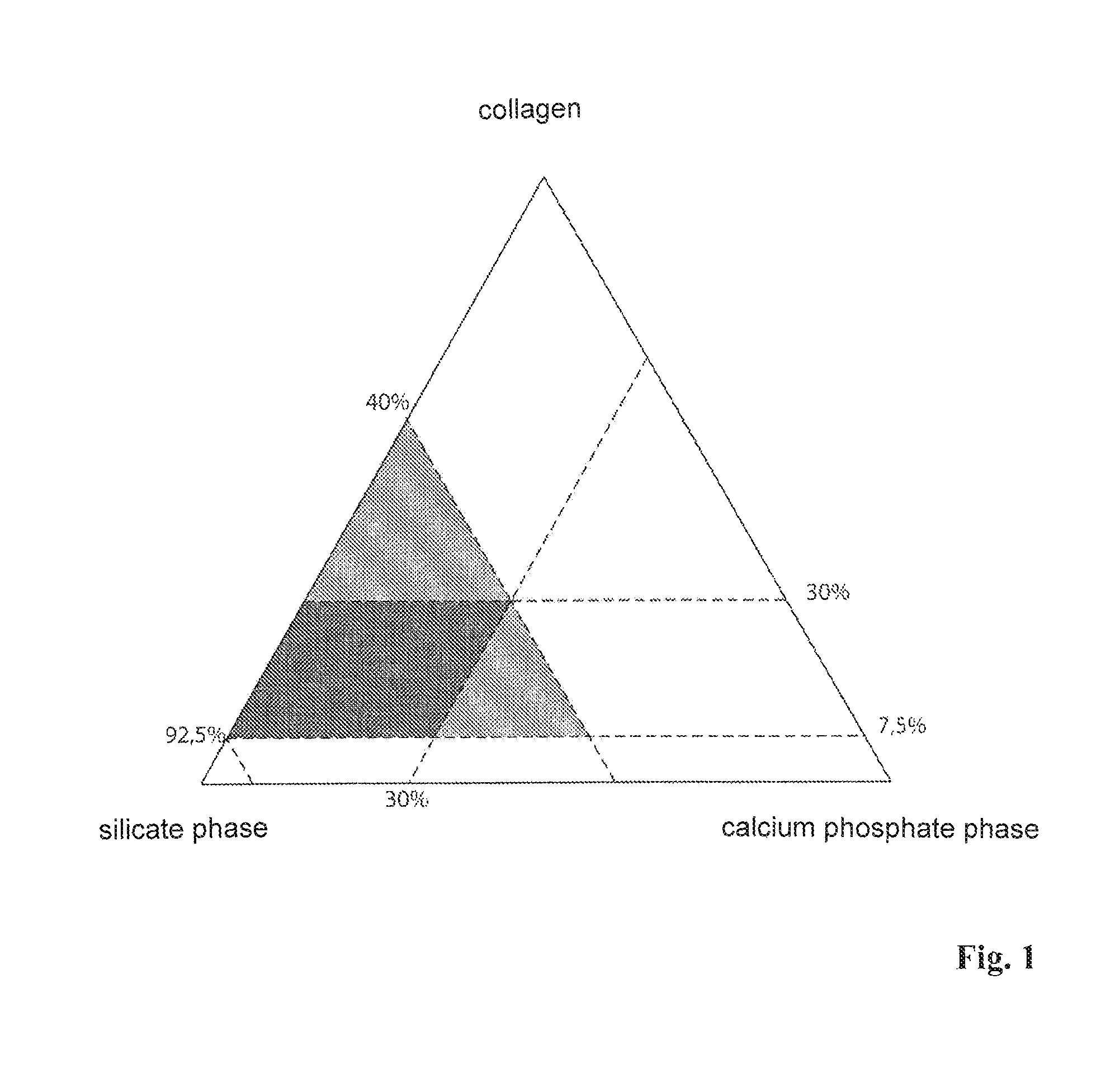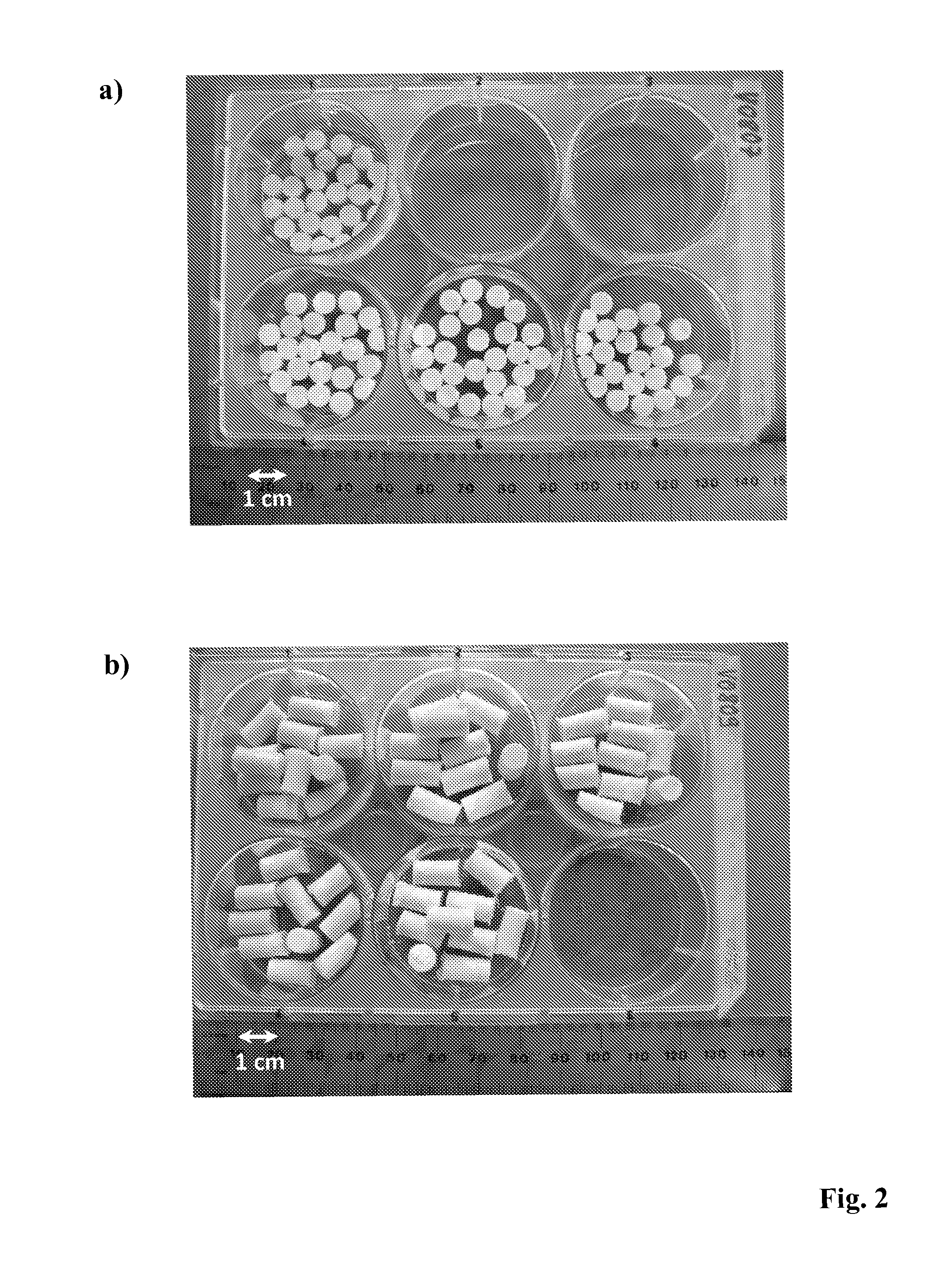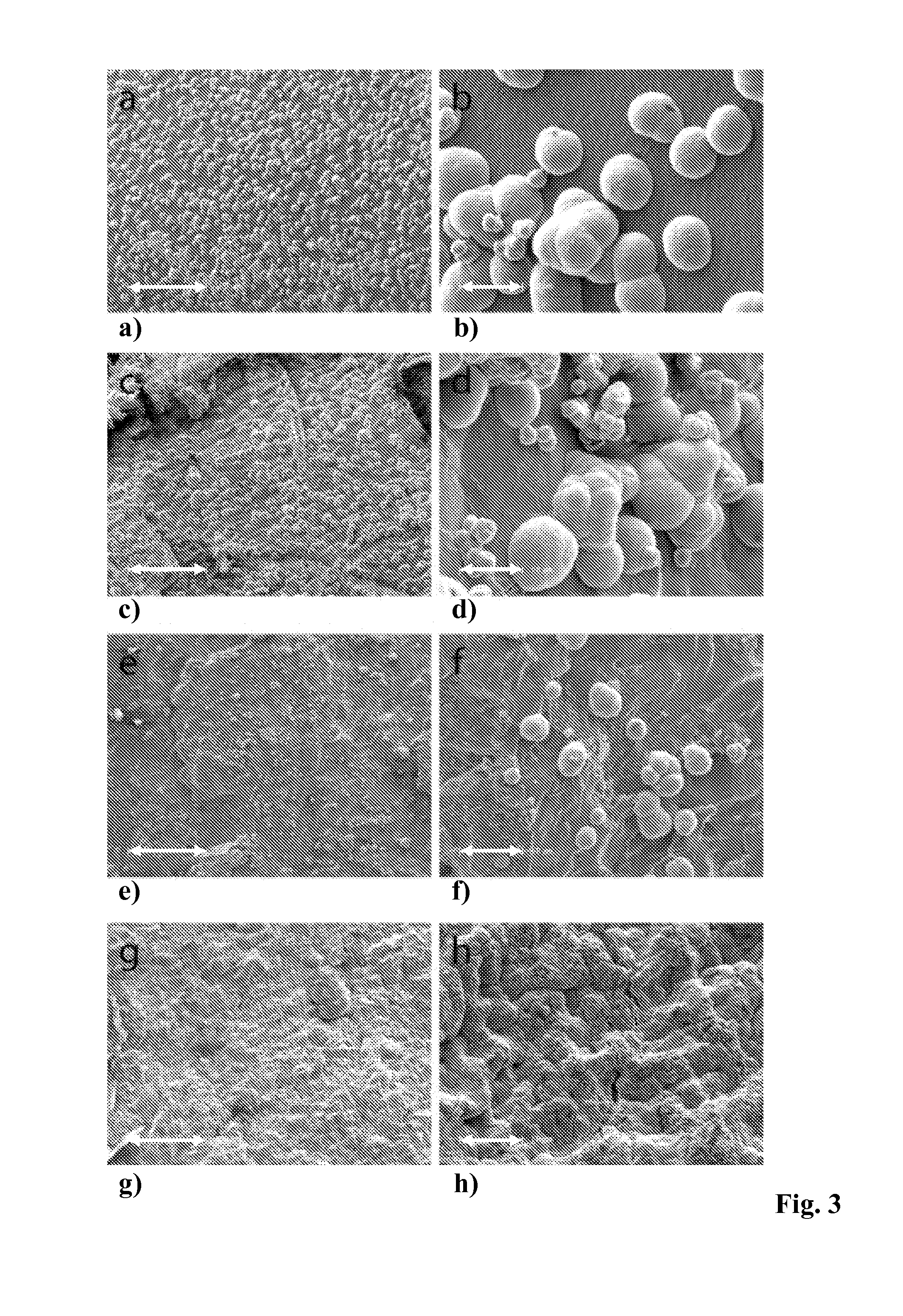Composite material consisting of a collagen matrix mineralised with silicate and calcium phosphate phases, method for the production and use thereof
- Summary
- Abstract
- Description
- Claims
- Application Information
AI Technical Summary
Benefits of technology
Problems solved by technology
Method used
Image
Examples
embodiment 1
Cylindrical Samples of the Composite Material of Silicate, Calf Skin Collagen, and Hydroxyl Apatite
[0073]Lyophilisate of calf skin collagen is suspended in neutral tris / HCl buffer (100 mmol, pH 7.4) for 24 hours with stirring so that a concentration of 20 mg / ml results. Hydroxyl apatite (Ca10(PO4)6(OH)2) is then added in powder form into the collagen suspension and dissolved over 24 hours with stirring. Alternatively, the calcium phosphate can be dissolved prior to this in the buffer in which later the collagen lyophilisate is suspended. The weighed quantity of calcium phosphate phases to be added as well as the corresponding volumes of silicic acid and collagen suspension depends on the desired composition. In this embodiment, a mass composition of 70% silicate, 15% collagen, and 15% calcium phosphate is listed.
[0074]For generating silicic acid, tetraethoxy silane (TEOS, 99%, Sigma) is hydrolyzed by addition of water and hydrochloric acid (10 mmol) as catalyst at 4° C. for 24 hours...
embodiment 2
Characterization of Bioactivity of the Xerogels
[0077]The disk-shaped xerogels of the composite material obtained as described in Embodiment 1 are stored in simulated body fluid (SBF). After 7 days the samples are removed and examined by means of scanning electron microscope. FIG. 3 shows images of composite materials of 100% silicate (FIGS. 3a, b); 85% silicate, 15% collagen (FIGS. 3c, d); 70% silicate, 30% collagen (FIGS. 3e, f); 70% silicate, 15% collagen, 15% calcium phosphate cement (FIGS. 3g, h).
[0078]The superimposed scale bar correspond to a length of 100 μm (FIGS. 3a, c, e, and g) or 10 μm (FIGS. 3b, d, f, and h).
[0079]The hydroxyl apatite that is formed in vitro can be seen as an insular shape on the surface. The images show that based on pure silicate the bioactivity with increasing collagen proportion decreases slightly, i.e., the density of the formed hydroxyl apatite islands decreases. On the other hand, for the three-material system according to the invention with calc...
embodiment 3
Comparison of Different Calcium Phosphate Phases in the Composite Material
[0080]The sample production is carried out in analogy to Embodiment 1. As calcium phosphate phase, in addition to hydroxyl apatite (HAP), calcium phosphate cement (CPC; a mixture of Ca3(PO4)2, CaCO3, Ca(HCO3) and Ca10(PO4)6(OH)2), amorphous calcium phosphate (ACP; Cax(PO4)y.nH2O) and a salt mixture (SZM, comprised of CaCl2, Na2HPO4) are also used. As a comparative sample the two-component system of 85% silicate and 15% collagen is used. Cylindrical samples are produced and tested by means of compression experiments with respect to mechanical properties. FIG. 4 shows how the compression strength of the composite material changes as a function of the employed calcium phosphate phase. In this way, the properties of the composite material can be adapted to the site of use.
PUM
| Property | Measurement | Unit |
|---|---|---|
| Density | aaaaa | aaaaa |
| Density | aaaaa | aaaaa |
| Density | aaaaa | aaaaa |
Abstract
Description
Claims
Application Information
 Login to View More
Login to View More - R&D
- Intellectual Property
- Life Sciences
- Materials
- Tech Scout
- Unparalleled Data Quality
- Higher Quality Content
- 60% Fewer Hallucinations
Browse by: Latest US Patents, China's latest patents, Technical Efficacy Thesaurus, Application Domain, Technology Topic, Popular Technical Reports.
© 2025 PatSnap. All rights reserved.Legal|Privacy policy|Modern Slavery Act Transparency Statement|Sitemap|About US| Contact US: help@patsnap.com



